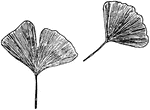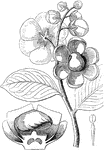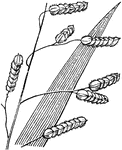325 illustrations of flowers and shrubs including: lady's slipper, larkspur, laurel, lentil, lettuce, lily, lion's foot, locust, logwood, loosestrife, lotus, and lythrum

Lavender
"Wild plant of the true lavender (Lavandula angustifolia): a, b, calyxes of flowers, the chief source…

Pitcher Plant Leaf
Here is a leaf of the pitcher plant. You see that it has an opening at the upper end. It can hold considerable…
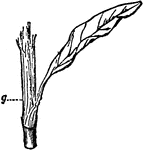
Stem and Leaf Part of Polygonum
"Polygonaceae, a natural order of Dicotyledons, containing 30 genera with about 700 species, chiefly…

Venus Fly Trap Leaf
Here is a leaf of the Venus's fly trap which is a spring trap for flies and other insects. Here you…

Venus Fly Trap Leaf
Here is a leaf of the Venus's fly trap which is a spring trap for flies and other insects. The two parts…
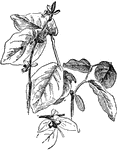
Leatherwood
Leatherwood, moosewood, and wicopy are the common names of dirca palustris. The plant grows two to six…

Lechenaultia
"Leschenaultia splendens. 1. calyx, stamens, and style, with stigma and indusium, all magnified." -Lindley,…
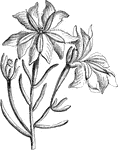
Blue Lechenaultia
Leschenaultia biloba or the blue lechenaultia is a flowering plant of the Goodeniaceae family.
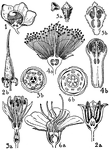
Orders of Lecythidaceae, Rhizophoraceae, Combretaceae, Myrtaceae, and Melastomaceae
Pictured are the orders of Lecythidaceae, Rhizophoraceae, Combretaceae, Myrtaceae, and Melastomaceae.…
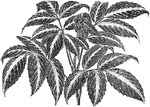
Leea Amabilis
The leaves of leea amabilis grow on long channeled leafstalks. Leaflets grow in two or three pairs.…

Legume
"Legume.--A pod; applied to the fruit of leguminous plants, such as the pea, &c." -Newman, 1850
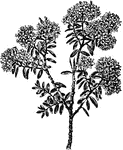
Leiophyllum Buxifolium
Leiophyllum buxifolium is native from New Jersey to Florida. The flowers are white and pinkish on the…

Lemna Minor
Pictured are floral details of lemna minor, a variety of duckweed. (aa) stamens and (b) pistil.
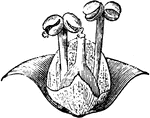
Lemnaoideae
Lemnaceae is a family of flowering plants, also known as the duckweed family, as it contains the duckweeds…

Lemon Tree-twig, with Leaves and Flowers
This illustration shows the twig, with leaves and flowers, of a Lemon tree (1. Pistil and part of the…

Upper Portion of Plant of Lens Esculenta
The common name of lens is lentils. Lens esculenta is the edible variety. The flowers are small and…

Lentil
"An annual plant of the same genus with tares, a native of countries near the Mediterranean, and which…

The Lentil Plant
This illustration shows a lentil plant. Lentils are the round, flat seeds of a small leguminous plant…

Habit, Detached Leaf, and Portion of Inflorescence of Leontice Altaica
Leontice altaica flowers are about twelve per plant. The flowers bloom in April. The plant grows between…
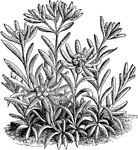
Leontopodium Alpinum
The common name of leontopodium alpinum is Edelweiss. The flowers heads grow at the end of the stems.…
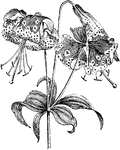
Leopard Lily
Leopard lily and panther lily are the common names of lilium pardalinum. The base of the flowers is…
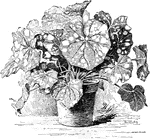
Leopard Plant
Leopard plant is the common name of ligularia kaempferi aureo-maculatus. The leaves are blotched with…

Lepachys Columnaris
Lepachys columnaris grows to two and a half feet in the wild and often taller in cultivation. The flowers…

Lepidium
This illustration shows stages in the germination of the gametospore of Lepidium, sectional view: A,…
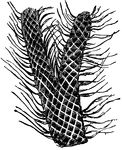
Portion of Lepidodendron
This illustration shows a portion of Lepidodendron. Lepidodendron is the generic name of a large and…

Pteris Leptophylla
A slender-fronded fern with straw-colored leaves. The fronds can reach between 9 inches and 12 inches…
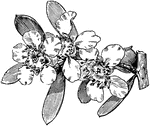
Flowering Branchlet of Leptospermum Laevigatum
Leptospermum laevigatum flowers are white. The flowers grow alone on each stem, sometimes with two on…
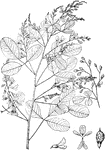
Lespedeza Bicolor
Lespedeza bicolor is a shrub with slender branches growing six to ten feet tall. The flowers are small…
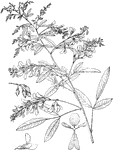
Lespedeza Sieboldii
Lespedeza sieboldii is native to Japan. The flowers bloom in September. The flowers are large and rose…

Leuchtenbergia Principis
Illustrated is a leuchtenbergia principis showing the transformation from scales to petals.
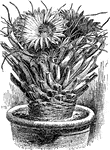
Leuchtenbergia Principis
The common name of leuchtenbergia principis is agave cactus. There are six to eight radical spines.…
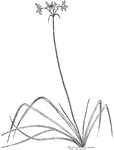
Leucocoryne Ixiodes
Leucocoryne ixiodes flowers are white or pale blue. The umbels have four to six flowers. The plant grows…
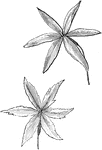
Detached Flower Heads of Two Varieties of Leucocoryne Ixiodes
These are detached flower heads of two different varieties of leucocoryne ixiodes. One flower head has…

Leucoium Aestivum
The common name of leucoium aestivum is Summer Snowflake. The flowers are pure white and about one inch…
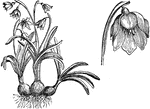
Habit and Detached Flower of Leucoium Vernum
The common name of leucoium vernum is Spring Snowflake. The flowers are white with green spots on the…
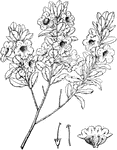
Leucophyllum Texanum
The flowers of leucophyllum texanum bloom in spring and summer. It is a loose growing, straggling shrub.…
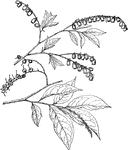
Leucothoe Recurva
Leucothoe recurva is native from Virginia to Alabama. The flowers bloom April to June. The foliage has…
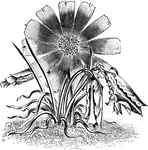
Lewisia Rediviva
Lewisia reiviva flowers are pink with a nearly white center. The flowers are about three to four inches…
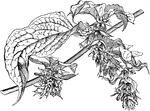
Flowering Branch of Leycesteria Formosa
Leycesteria formosa flowers are white with a tinge of purple. The plant grows between four and six feet…
Liatris Spicata Montana
Liatris spicata montana grows ten to twenty inches high. The flowers are blue purple. It is native to…

Habit and Detached Flower Head of Liatris Spicata
The common names of liatris are blazing star and button snake root. The spicata variety has purple flowers…
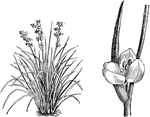
Habit and Portion of Detached Inflorescence of Libertia Formosa
Libertia formosa flowers are white. The leaves are linear and sword shaped. The stem is sixteen inches…

Licorice
Licorice is the root of Glycyrrhiza glabra, from which a sweet flavour can be extracted. The liquorice…

